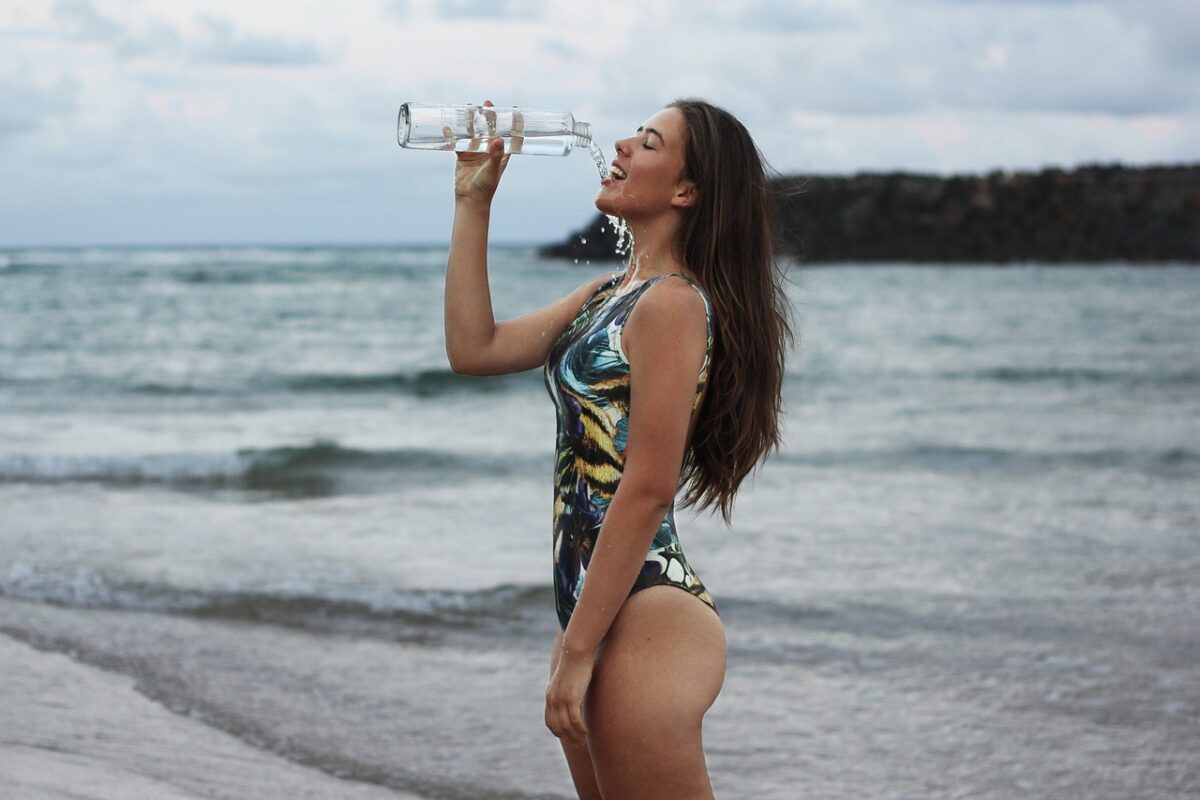I was looking for a swimsuit that could support my large bust, and I made the mistake of opting for a tight swimsuit. The tightness caused skin redness and restrictions in my swimming strokes.
I delved deeper into understanding how tight a swimsuit should be. In this guide, I will share with you how to tell whether the swimsuit is fitting, undersize, or oversize.
Contents
How Tight Should a Swimsuit Be?
The swimsuit should be tight enough to provide the necessary support, such as preventing the breasts from bouncing around when making swimming strokes. Although you could also put a bra under swimsuit, you still need to pick one that perfectly fits your body frame. The swimsuit should also be able to hug your curves and outline your contours. It should fit close against the body while ensuring you can freely move.
While feeling some level of compression is normal, tight swimwear shouldn’t make you uncomfortable. Understanding the level of tightness you need to make the most out of your swimwear is crucial.

Factors That Influence Swimsuit Tightness
When I set out to find the swimsuit trends that would offer the perfect fit for my body, I discovered how the following factors affect how tight the swimsuit should be.
Fabric
Normally, when wearing a swimsuit that’s too big, the fabric will have extra room to move around, which can cause it to bunch up.
- Since the swimsuit fabric tends to stretch more once it gets wet due to the weight of the water, it may become even more baggy. This bagginess can make you feel uncomfortable and look unflattering.
- The swimsuit fabric should be tight enough to hug your curves smoothly, following your body’s natural lines without bunching up in areas like around the breasts or bottom.
- This tightness can make you flatter, especially if you have a curvy figure and are wearing a swimsuit style with a plunging neckline and a high-waisted bottom. This creates the illusion of a slimmer waist and a more hourglass figure.
Support
If you have a large bust and the breasts move and bounce around when swimming, the breast ligaments can weaken, leading to sagging and pain. For example, a well-fitting monokini swimsuit should be tight enough to support your breasts, preventing them from moving around when swimming.
If you want to conceal your tummy, especially after delivery, a tight high-waisted two-piece swimsuit can help smooth out your stomach and give you a more streamlined appearance. The swimsuit should also be tight enough to offer support and reduce chafing when swimming.
Straps
Swimsuit straps help provide support to the bust and overall structure of the swimsuit. This helps distribute the weight of the swimsuit, which is why it can alter the swimwear’s tightness by keeping the fabric close to the body.
As a result, the swimsuit can remain in place and comfortable without being excessively tight on the body.
The straps should be fitting to remain in place without digging into your skin, falling off your shoulders, or riding up at the back when making swimming strokes. Fitting straps should allow you to fit two fingers between them and the skin.

Swimsuit Tips to Achieve the Right Tightness
An ill-fitting swimsuit can restrict blood circulation and make you feel insecure about your body, especially if it is too revealing. If finding the right swimsuit fit is a challenge, you can try out the following tips:
- Choose wider and adjustable straps: They allow you to personalize the fit of the swimsuit by either tightening or loosening the straps.
- Opt for molded cups: These types of cups fit snugly against the body. These can help to provide a comfortable fit and prevent the breasts from moving around too much when swimming.
- Wear a two-piece swimsuit: If you have a petite body at the top and wide hips at the bottom like me, getting a fitting one-piece swimsuit might be challenging. Plus, you’ll also need to worry how to put padding on a one-piece swimsuit. If this is the case, try a two-piece swimsuit, which allows you to mix sizes until you get a comfortable fit.

Related Questions
Do Swimsuits Stretch Over Time?
Yes, swimsuits stretch over time and lose their shape and tight fit. This can affect its fit as it tends to sag, exposing you to the sun’s harmful UV rays, which increases the risk of developing skin problems such as skin cancer.
Should Swimsuits Be Tighter When Dry or Wet?
Do swimsuits shrink or stretch? Yes, swimsuits should be tighter when dry than when wet. This is because the fabric will stretch when wet, fitting your body shape properly. So, if the swimsuit is fitting when dry, it will be too big when wet, making it flappy and unflattering.
How Often Should I Check the Tightness of My Swimsuit?
It’s advisable to check the fit of your swimsuit regularly before every use, especially if you last wore it a while ago. Bodies change over time, and you might realize that you have gained weight, lost weight, or even the swimsuit fabric overstretched over time.
Conclusion
Wondering how tight a swimsuit should be? Simply check to ensure the fabric is smoothly hugging your curves without restricting your movements. You should also be able to insert two fingers between the skin and the swimsuit straps.
